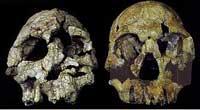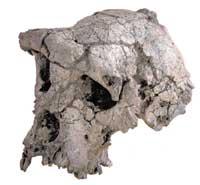How do we know Lucy…?
2002/05/26 Roa Zubia, Guillermo - Elhuyar Zientzia
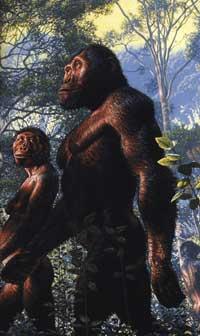
American paleontologists Donald Johanson and Tom Gray were looking for fossils in the Awash River basin. After working all day with the map, they decided it was time to return to the camp. But, at Johanson's proposal, they left a long way back to Land Rover. When they walked, the paleontologist saw something like a fossil; the scientists studied the fossil well and realized it was the arm bone of a hominid. In addition to the bracelet, other bones were found, without being destroyed by the passage of time: skull, femur, cheek, pelvis and small bones; two weeks later, after a few hours of excavation, hundreds of fragments were recovered. In total, they received 40% of the skeleton of a hominid.
On the same day of the discovery, the night of November 30, 1974, scientists celebrated a great feast. Lucy in the Sky with Diamonds, from The Beatles, was heard on numerous occasions and (no one in the group remembers very well when) was baptized as Lucy.
Lucy was a hominid of the genus Australopithecus, of size and appearance of a chimpanzee. It was a species hitherto unknown: Discovered in the Afar River region of Ethiopia, Lucy was the first specimen of the species Australopithecus afarensis. Since then, many other fossils of the same species have been found in the same area.
Except at home
Although it seems a lie, Lucy's bones are found in Ethiopia and not in London, Paris or New York. Whoever wants to see him has a party because it is kept in the National Museum of Ethiopia of Addis Ababa, but not visible. It is framed within a safe box made to the effect. This is the only way to affirm that the bones will remain whole because of their fragility. However, both in research and teaching and exhibitions, replicas of bones have been performed.
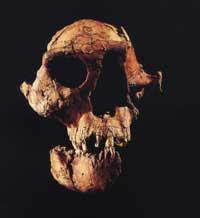
Today paleontologists know a lot about Lucy. Adult female, mature but not very old, who lived 3,18 million years ago. It had an approximate height of one meter and resembled the current chimpanzees. But it had an important difference: it had capacity for two legs. Anyway, the Australopithecus did not leave the tropical forest and was herbivorous, or rather fruitful. Of course, like any other small monkey of these characteristics, it was in the diet of carnivores. But it does not seem that Lucy died trapped by carnivores…
Work by Sherlock Holmes
Yes, yes. It seems that paleontologists know more about Lucy than his neighbors, and they also draw all that information from a few pieces of bone. Do we have to believe what they tell us? How do you know all this?
Paleoanthropologist Yves Coppens has a clear and timely response: those who disseminate this information are experts in it and know how to obtain it. They also do it with a complex methodology and cannot explain it from top to bottom, it would be too long. However, it is worth explaining some simple things, above all.
How do we know that Lucy was hominid? What is hominid is a question of definition, that is, to some extent it is something that biologists who study evolution decide. The hominids, for being brief, are primates who walk on two legs and erect. Within it are included, in addition to the word Homo in the scientific name, the Australopithecus. This characteristic differentiated our evolutionary branch from that of chimpanzees.
But how do we know that Lucy was erect? The key is in the shape of the bones. Walking to two legs requires the body weight to be placed on one leg in each step. For this purpose, the bones of chimpanzees do not have the proper aspect. The spine, pelvis, femur, label, and intersections of all these bones must have certain angles and shapes; and Lucy's bones are designed for the two to lose.
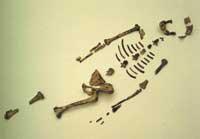
How do we know she was female? One of the most characteristic features of the hominids of the time discovered in East Africa is sexual dimorphism, that is, the difference in size between males and females. The males of these hominids were much larger than the females. Bearing in mind that Australopithecus was an Australopithecus, Lucy is small, that is, she was a female… or was it simply a young?
How do we know how many years Lucy was when she died? Because he had the last servants and a little spent, so he was older. Bone junctions and skull seams are also the most mature, and in the vertebrae remains of a degenerative disease. Therefore, it must be concluded that he was an adult, but not very old.
How do you know when Lucy is? The age of fossils is difficult to know, but it can help the environment where it has been collected. Paleontologists collect sediments, spores, animal remains and stones from the site, and calculate the same as one by one. Of all the results, including those of the bone, you can know when the hominid is.
In addition, scientists know more things that do not tell us. For example, that all the bones were of Lucy and that those of others have not mixed, etc. The work of these Sherlock Holmes is interesting and long… Sure, it is in our hands to believe or not, why not?
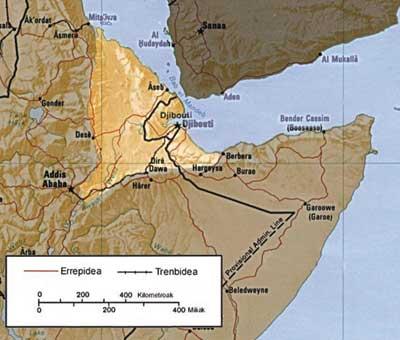
Published in 7K.

Gai honi buruzko eduki gehiago
Elhuyarrek garatutako teknologia





